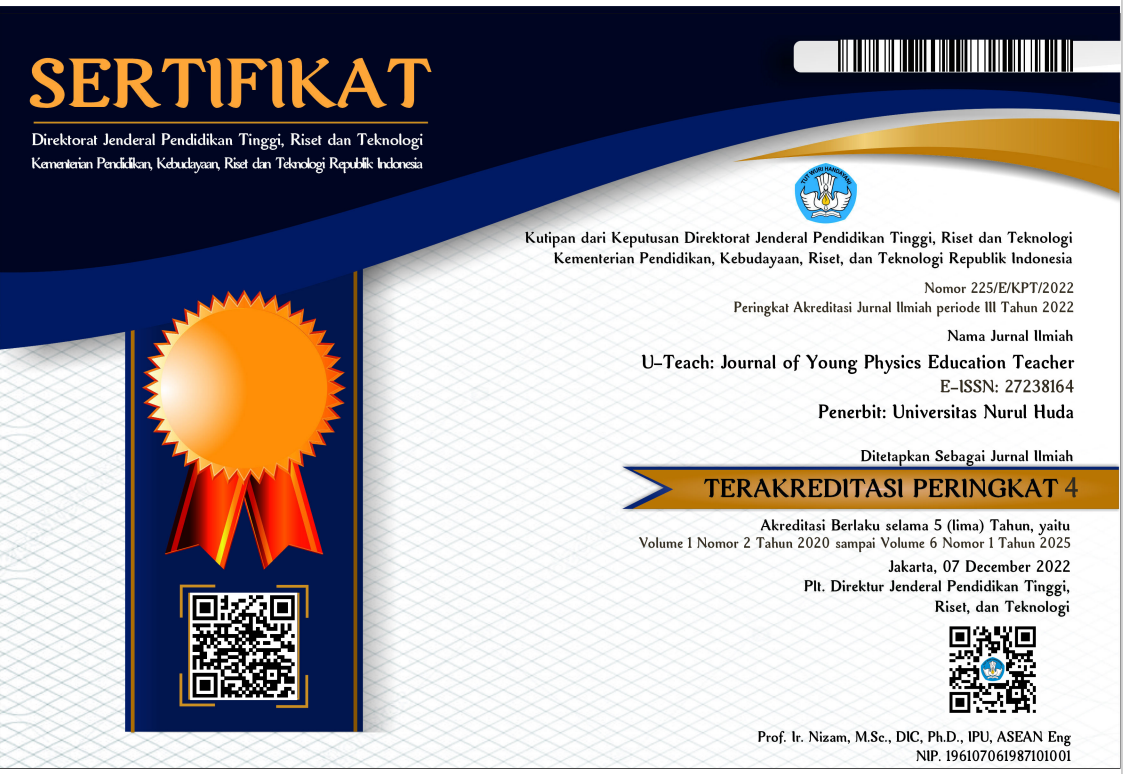Puzzle Fisika Berbasis Make a Match: Pengembangan Media Pembelajaran terhadap Hasil Belajar Siswa SMA Kelas XI
DOI:
https://doi.org/10.30599/uteach.v5i1.554Keywords:
Circular motion, learning media, puzzle, learning outcomes, make a matchAbstract
This research aims to develop physics puzzle learning media based on make a match and evaluate the impact of this media on improving student learning outcomes. This research uses the Research and Development using the Borg & Gall procedural model from ten phases to seven phases because these seven include ten processes. The data collection methods used include media expert and material expert validation sheets, test instruments in the form of essay questions and student response questionnaires. The results of this research show that, 1) The make a match based physics puzzle learning media developed in this research has succeeded in meeting the feasible criteria with an average score percentage of 88% given by media experts in the very feasible category. Apart from that, material experts also assessed that learning media with an average score percentage of 94% was in the very appropriate category. 2) The use of make a match-based physics puzzle learning media has been proven to significantly improve student learning outcomes, as indicated by an N-Gain analysis score of 0.72. 3) Student responses to the appearance and function of the media show a high level of feasibility. The learning media that has been developed is feasible and can be used to improve student learning outcomes in circular motion material
Downloads
Downloads
Published
How to Cite
Issue
Section
License
Copyright (c) 2024 Reni Setiawati, Arini Rosa Sinensis, Effendi Effendi

This work is licensed under a Creative Commons Attribution-ShareAlike 4.0 International License.






